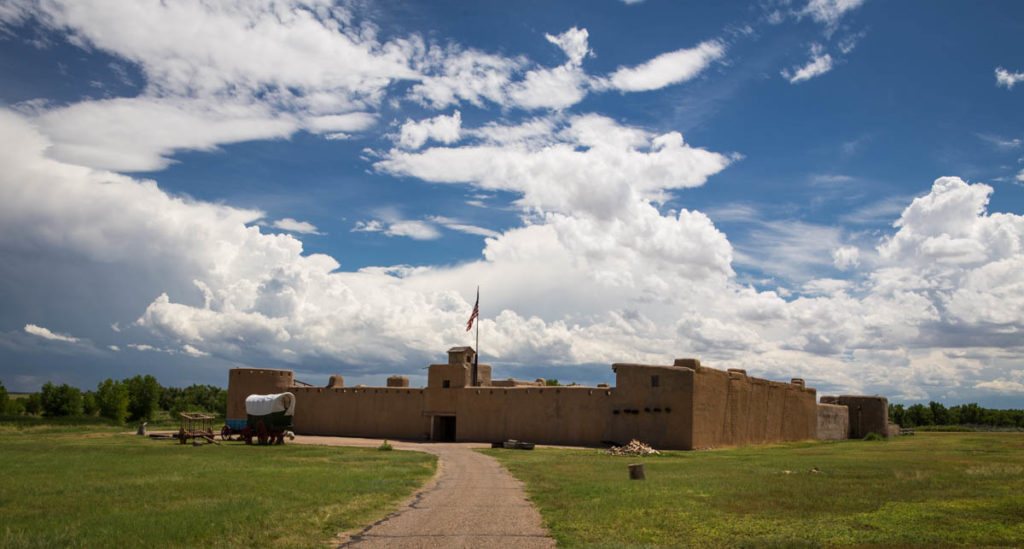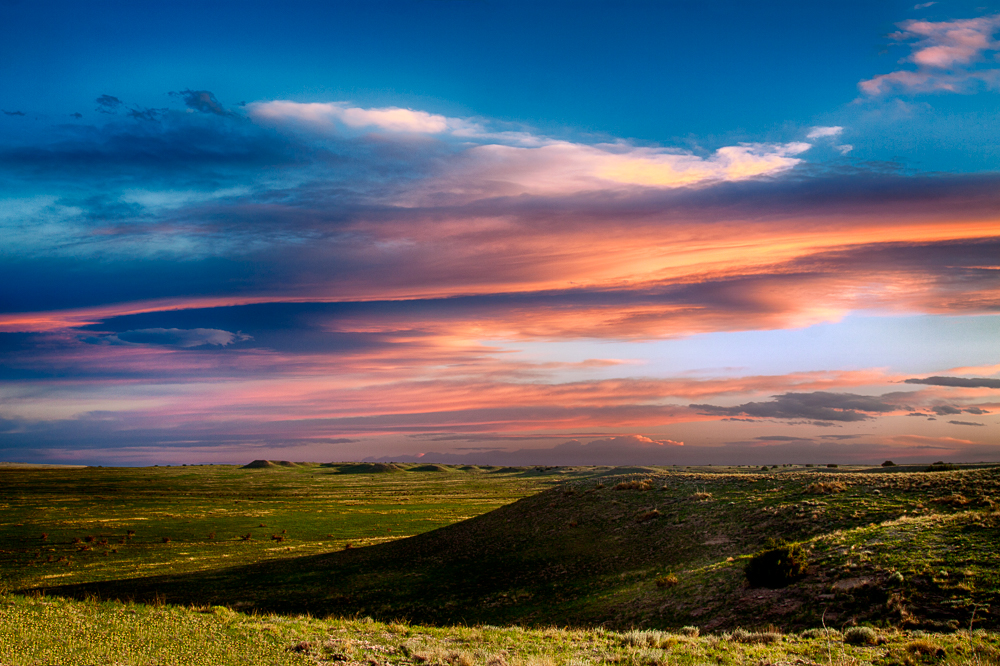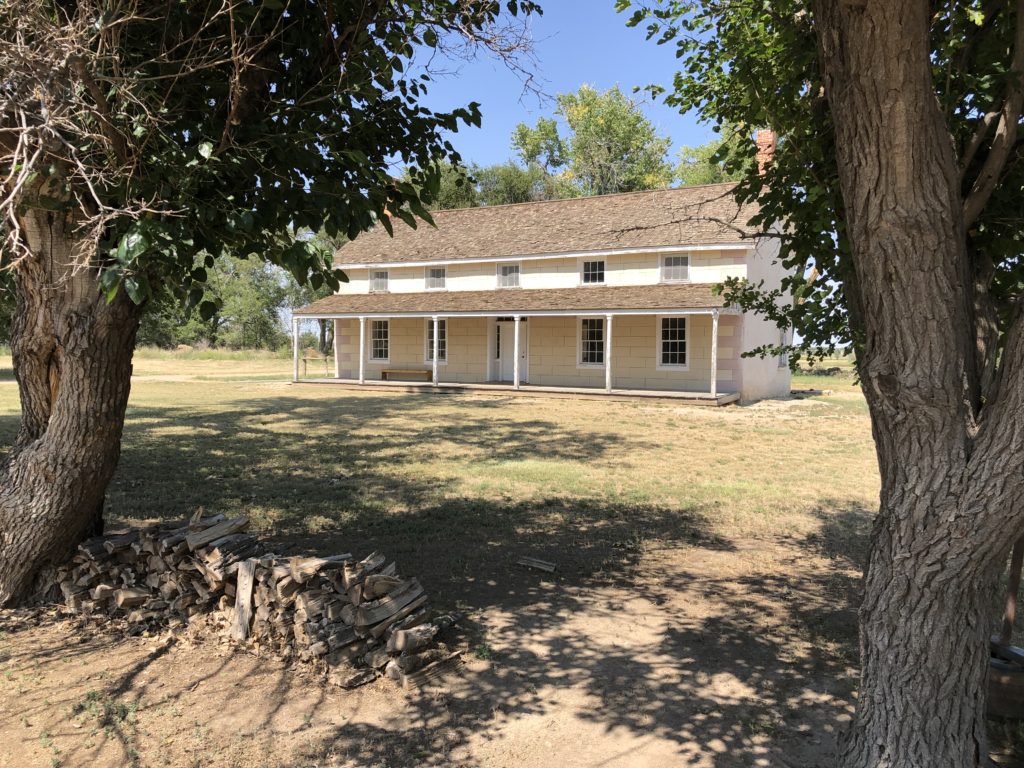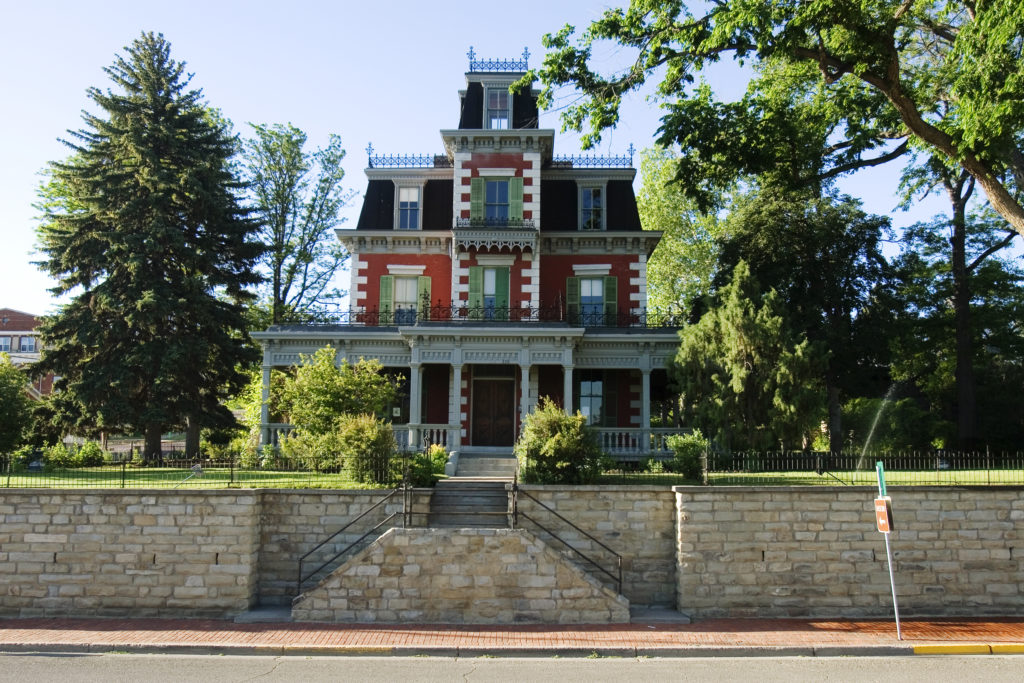Travel Back in Time on the Santa Fe Trail
Between the years of 1821 – 1880 the Santa Fe Trail was America’s first international highway. The Santa Fe Trail was first and foremost a commercial route between Mexico and the United States. Unlike its contemporary, the Oregon Trail, which was an emigrant route, the Santa Fe Trail was the highway of merchants traveling in either direction with goods to sell.
In 1821 William Becknell began the first successful trading journey from Missouri to Santa Fe along what would be call the Santa Fe Trail. In celebration of the trail’s Bicentennial, you can visit many fascinating historic sites along the trail in southeast Colorado.
History of the Santa Fe Trail
The Santa Fe Trail – America’s First International Highway
"Wagons Ho!" shouts the Wagon Train Captain after he hears "all set" from the wagon boss. And the train heads off on the nearly 850-mile trip down the Santa Fe Trail. Wagons laden with cloth, needles, thread, knives, files, axes, and tools were headed for Mexico. There they would be traded for silver, furs, and mules providing the traders a great return on their investments.
From 1821 to 1881, oxen and mule teams pulled wagons of commerce back and forth between Missouri and Santa Fe. The first successful commercial trip by William Becknell in 1821 opened this international highway between the United States and Mexico. In 1846, the U.S. Army followed the same path to occupy Nuevo Mexico and bring Santa Fe into the United States.
The railroads arrival into Santa Fe in 1880 marked the end of the trail, which had united two countries and two regions for decades.
Becknell’s Trip
When Becknell headed west from Missouri in 1821, he followed a general route across the plains already trod by Native Americans, Spanish explorers and French traders. At the time Americans were not welcome in Spain’s far province of Nuevo Mexico. In fact, some Americans venturing to that territory had been imprisoned. But as Becknell traveled deeper into Spanish territory, he met up with a detachment of soldiers and was not arrested, but warmly invited on to Santa Fe. The reason: Mexico had achieved independence from Spain and trade restrictions had been lifted. His trip was a success beyond expectations.
Becknell and others headed out again in 1822. He used wagons on this trip, the first to be taken across the prairies to Santa Fe. Over the next several decades, thousands of wagons would follow.
International Highway
Traffic on the Santa Fe Trail was international. Besides wagons filled with goods often imported from Europe, those involved in the trade were of many nationalities. They ranged from French-Canadians like Antoine Robidoux to Germans serving as middlemen in the markets of Mexico. Hispanic merchants like Antonio Jose Chavez, the Armijo Family, and the Otero’s shared the trail with Americans like Henry Connelly, the Bent’s and the Magoffin’s. The commerce did not stop at Santa Fe. Traders very often continued south to Chihuahua and beyond. On the other end, Hispanic traders traveled eastward to markets as far as Philadelphia or New York to gather trade goods.
The trail also crossed the lands of Native American nations including the Pawnee, Arapaho, Cheyenne, Comanche and Kiowa. Traders dealt with these tribes providing manufactured goods in exchange for furs or horses. At times relations with the tribes were turbulent, especially as increasing trail traffic across the plains impacted resources like grass for grazing and bison for food. By the late1860s wagons crossing the plains were sometime targets for the tribes, avenging military attacks on Native villages.
End of an Era
On February 9, 1880 the first railroad train arrived in Santa Fe. No more would freight wagons ply back and forth across hundreds of miles of prairie. In its time the trail had served as a conduit of not only goods, but of language, cuisine and ideas. This cultural exchange tied the Southwest to the rest of the United States. In recognition of the significance of the trail to our nation’s history, Congress in 1987 declared the Santa Fe Trail as a National Historic Trail. Modern travelers can still trace the ruts, visit trading posts and forts, and see homes of trail travelers here in Southeast Colorado.
Sites Along the Santa Fe Trail
Bent's Old Fort National Historic Site
 Administered by the National Park Service, this reconstructed fur trading post on the trail lets visitors travel back in time to the 1840s. Interpreters in period clothing tell the story of the post in the history of the west. Learn more here.
Administered by the National Park Service, this reconstructed fur trading post on the trail lets visitors travel back in time to the 1840s. Interpreters in period clothing tell the story of the post in the history of the west. Learn more here.
Comanche National Grassland

Boggsville Historic District

A National Historic District just south of Las Animas, the Boggs and Prowers Houses, built in the 1860s, still stand as remnants of one of the first settlements along the trail. This is where the ranching and farming history of the region began. Learn more here.
Trinidad History Museum
Administered by History Colorado, the property features the historic Bloom Mansion and Baca House, two residences built in the late 19th century, as well as the Santa Fe Trail museum, all on one block in Trinidad's acclaimed historic district.

